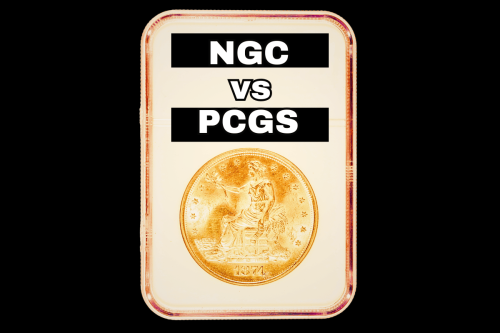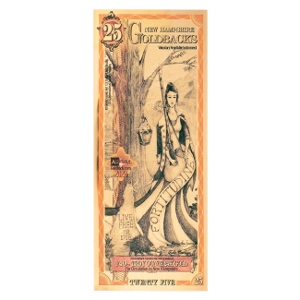
Coin Grading Companies: PCGS vs NGC
If you want to learn more about coin grading factors and the industry's two titans, PCGS and NGC, we will dive into the heart of their rivalry, unraveling the mystique behind their grading services!
The Role of Coin Grading Companies
Coin grading companies play a vital role in the world of numismatics, which is the study and collection of currency, including coins, tokens, paper money, and related objects.
These companies assess coins' condition, giving them a grade that helps determine their market value. This grading process is crucial for collectors and investors alike. It provides a standard way to evaluate a coin's authenticity, condition, and overall appeal.
When a coin is sent to a grading company, experts examine it closely. They look at several factors, including how well the coin was struck, how much wear it has seen, and any signs of damage or unusual features.
This could include anything from scratches and dents to the coin's luster, which measures its shininess and visual appeal. Coin vibrancy and color are also considered, as they can affect its attractiveness to collectors.
Grading coins is not just about assessing their physical condition. It also involves verifying their authenticity. With the rise of counterfeit coins, having a trusted authority confirm a coin's genuineness is invaluable.
Once the grading process is complete, the coin is usually sealed in a protective case with its grade displayed. This case safeguards the coin and ensures that its grade is recognized and accepted in the market.
The grade given by these companies can significantly impact a coin's price. Higher grades, indicating better condition and rarity, can make a coin much more valuable. This makes grading essential for anyone looking to buy, sell, or collect coins. By providing a reliable and standardized evaluation, coin grading companies help maintain trust and stability in the numismatic market.
Professional Coin Grading Service (PCGS)
The Professional Coin Grading Service, or PCGS, has been a leading name in coin grading since its founding in 1986. It was established by a group of seven coin experts who saw the need for standardized grading in the numismatic community.
Their goal was to create a system that would offer reliable and consistent coin evaluations. Over the years, PCGS has graded millions of coins, and its grading standards have become a benchmark in the industry.
The company has also introduced several innovations, such as secure coin holders and a comprehensive database of coin information. These contributions have helped PCGS earn a reputation for trustworthiness and expertise in the field of coin grading.
Numismatic Guaranty Corporation (NGC)
Founded in 1987, just a year after PCGS, the Numismatic Guaranty Corporation (NGC) quickly established itself as another key player in the coin grading industry. NGC was created with a similar mission to provide accurate and objective coin grading.
The founders included numismatic professionals who brought their expertise and vision for a service that would enhance the coin-collecting experience. NGC has also been at the forefront of incorporating technology into its grading process, which has helped provide more detailed assessments of coins.
Like PCGS, NGC offers a variety of services, including grading, conservation, and authentication, making it a full-service organization for collectors. NGC's commitment to integrity and quality has made it a respected name among numismatists around the world.
Both PCGS and NGC have played significant roles in shaping the landscape of coin collecting and investing. Their histories reflect a shared commitment to excellence and reliability in coin grading. Each company has contributed to the development of standards that have made the hobby more accessible and enjoyable for collectors of all levels.
Grading Standards and Processes
Coin grading is a meticulous process that involves examining and evaluating a coin's condition to assign it a grade. This grade helps determine the coin's market value, with higher grades often indicating higher value.
PCGS and NGC use the Sheldon Scale, a numerical system ranging from 1 to 70, with 70 representing a perfect coin with no post-production flaws. This scale is the industry standard, allowing collectors and investors to quickly understand a coin's grade. The grading scale includes designations for specific attributes, such as strike quality, surface preservation, and visual appeal, which are critical in assessing a coin's overall grade.
Description of the Grading Process at PCGS
PCGS's grading process involves multiple expert numismatists examining each coin under magnification to assess its condition. They look for any signs of wear, damage, or tampering, considering factors like the coin's luster, coin color, and strike quality.
The evaluators at PCGS work independently to ensure an unbiased assessment and a consensus is reached to determine the final grade. PCGS also strongly emphasizes security and authenticity, using advanced technology to detect counterfeits and guarantee the integrity of its grading.
Description of the Grading Process at NGC
NGC's approach to grading is similar, with a focus on accuracy and objectivity. Coins submitted to NGC are examined by a team of specialists who use state-of-the-art tools to evaluate the coin's physical condition.
Like PCGS, NGC considers the coin's luster, strike, and visual appeal, along with any signs of wear or damage. NGC also encapsulates graded coins in a secure, tamper-evident holder, providing both protection and a guarantee of the coin's assessed grade.
While both PCGS and NGC adhere to the Sheldon Scale, slight differences in their grading philosophies and processes can lead to variations in the grades assigned to the same coin by the two companies. Collectors often discuss these differences, with some preferring the grading style of one company over the other.
However, both PCGS and NGC are respected for their commitment to accuracy, and their grades are widely accepted in the numismatic market.
Factors Influencing Coin Grading
The quality of a coin's strike plays a significant role in its overall grade. A coin struck with precision will display sharp and detailed features, making it more desirable to collectors.
Strike quality can vary even among coins from the same batch, as minor differences in the minting process can affect the final product. Coins with a full, sharp strike generally receive higher grades.
Preservation and Wear
The level of preservation and the amount of wear a coin has are critical factors in grading. Coins that have been well-preserved and show little to no wear often achieve higher grades.
Graders look for signs of wear on the coin's highest points since these areas are the first to show wear. Coins with minimal wear, especially those that have retained most of their original luster, are considered in better condition.
Luster
Luster refers to the way light reflects off the surface of a coin. It is a good indicator of a coin's condition and originality.
A coin that maintains its original luster is often in a superior state of preservation and can be graded higher. Over time, handling and environmental exposure can diminish a coin's luster, affecting its grade.
Environmental Damage
Environmental damage such as corrosion, tarnishing, or chemical reactions can adversely affect a coin's grade. Collectors and graders look for any signs that a coin has been exposed to harmful conditions.
While some patina or toning is acceptable and can even enhance a coin's appeal, significant damage will lower its grade.
Marks and Scratches
Another essential consideration is the presence of marks and scratches. These flaws can detract from the coin's visual appeal and lower its grade.
Graders examine the coin's surface under magnification to identify any imperfections. These marks' location, size, and number can significantly influence the grading outcome.
Eye Appeal
Finally, eye appeal encompasses the overall attractiveness of a coin. This subjective factor includes considerations of color, tone, and the balance of the design elements.
A coin with exceptional eye appeal can sometimes receive a higher grade because it possesses qualities that make it stand out to collectors.
Services Offered
When it comes to preserving and assessing the value of coins, both the Professional Coin Grading Service (PCGS) and the Numismatic Guaranty Corporation (NGC) offer a range of services that cater to collectors and investors alike. As we've discussed, both PCGS and NGC provide detailed coin grading services at the core of their offerings.
Authentication is another vital service. It verifies that a coin is genuine and not counterfeit. This process protects collectors from fraud and ensures the integrity of their investments.
PCGS and NGC use advanced technology and the expertise of their specialists to authenticate coins. This service is often used in conjunction with grading, providing collectors with peace of mind about the authenticity and quality of their coins.
Conservation
Conservation services are designed to preserve a coin's condition without altering its fundamental characteristics. This can include removing harmful residues or stabilizing a coin's surface to prevent further degradation.
NGC, for example, offers a conservation service that aims to preserve the coin's original appearance carefully. Such services are essential for maintaining the value and longevity of rare or delicate coins.
Encapsulation
After grading and authentication, coins are often encapsulated in secure, tamper-evident holders. These holders provide physical protection while clearly displaying the coin's grade and relevant information.
Both PCGS and NGC have proprietary holders designed to safeguard the coin against environmental damage and handling, ensuring the coin remains in its assessed condition.
Additional Services
Beyond these core services, PCGS and NGC offer additional resources to collectors. These can include access to comprehensive price guides, educational materials, and registry sets where collectors can showcase their coins.


Market Perception and Acceptance
In the coin-collecting world, grading companies' reputation and acceptance play a crucial role. Professional Coin Grading Service (PCGS) and Numismatic Guaranty Corporation (NGC) are highly respected in the numismatic community, but they each have a unique standing among collectors and investors. Their reputations are built on a foundation of consistent grading standards, the reliability of their services, and their contributions to the numismatic industry.
When PCGS was established in 1986, it quickly set a high standard for coin grading. It is particularly revered for its grading of U.S. coins. Many collectors and investors view PCGS-graded coins as the benchmark for quality and authenticity.
The company's grading consistency, especially for high-grade coins, has garnered trust and confidence among serious collectors. This trust translates into a perception that PCGS-graded coins often command a premium in the market, especially for rare or highly sought-after pieces.
NGC has also developed a strong reputation, especially among collectors of world and ancient coins. Its comprehensive approach to grading, including the conservation services offered through its sister company, NCS (Numismatic Conservation Services), has appealed to a broad audience within the numismatic community.
NGC's encapsulation process, which includes detailed information about the coin's condition and authenticity, is highly valued by collectors looking to preserve their investments over time.
Major Contributors
Both PCGS and NGC have contributed significantly to the transparency and efficiency of the coin market. Their grading systems provide a common language for assessing coin quality, facilitating trading, and ensuring that collectors and investors speak the same language.
This has been especially important in the growth of online coin sales, where buyers and sellers may not have the opportunity to examine coins in person before making a transaction. PCGS and NGC's acceptance in the market is a testament to their grading services and efforts to educate the public and promote numismatics as a hobby and investment.
PCGS vs NGC: Both Premiere Organizations
In the nuanced world of coin collecting, the comparison between PCGS and NGC reveals two highly reputable companies dedicated to the integrity and advancement of numismatics. Both offer unique strengths, ensuring collectors and investors alike can trust in their grading, authentication, and conservation services to protect and value their treasures.
Since 2003, the U.S. Gold Bureau has provided more than $2 billion in precious metals to new and seasoned investors. Get our free precious metals investor guide today!











